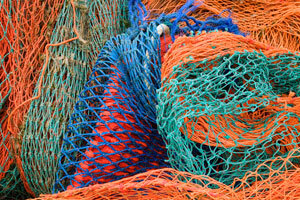 The CSIRO recently published their long awaited Climate Change book, Climate Change: Science and Solutions for Australia.[1] The publication provides fresh and up to date information on the latest scientific findings on many climate change topics relevant to Australia and the rest of the world. “Climate change research over many years shows links between human activities and warming of the atmosphere and oceans. This warming has caused changes to the climate system, such as changes in rain and wind patterns and reductions in Antarctic sea ice.”[2]
The CSIRO recently published their long awaited Climate Change book, Climate Change: Science and Solutions for Australia.[1] The publication provides fresh and up to date information on the latest scientific findings on many climate change topics relevant to Australia and the rest of the world. “Climate change research over many years shows links between human activities and warming of the atmosphere and oceans. This warming has caused changes to the climate system, such as changes in rain and wind patterns and reductions in Antarctic sea ice.”[2]
But what are the real implications for agriculture. How does the agricultural sector successfully adapt to climate change here in Australia, given we are already a continent of vast extremes and weather variations, which are only going to become more pronounced?
Envirosafe Solutions has taken a careful look at the publication’s chapter, “Adapting Agriculture to Climate Change,” and outlines the latest findings and information relevant to the sector.
Agriculture and changing conditions
Dr. Chris Stokes and Dr. Mark Howden know all about agriculture and climate change. It’s one of their specialist research areas. Both academics maintain that “helping agriculture adapt to climate change involves helping communities to understand why adaptation is needed.”[3] Education is key and Australians from the agricultural sector need to understand that new flexible, risk-based approaches will help, along with a simple adoption of already existing best practice management strategies and good natural resource management approaches. Radical and aggressive measures and changes to operations may not always be required, but there still is a national imperative to equip Australian agriculture to be prepared to adapt to climate change.
The sector, including fishing and forestry already copes with a harsh environment, and producers may in fact be well placed and already adept at continually managing their practices to deal with extreme conditions. Climate Change and global warming may well undoubtedly add a new aspect or dimension to these conditions, but because of the historical familiarity with extreme weather patterns, Australia’s agriculture sector may fare better than its counterparts from other regions on the planet.
Collaboration is the key
The authors however, point out that proper adaptation cannot be left to farmers and agriculturists or even governments alone. “Everyone involved in the food industry, including policy makers, research and development providers, enterprise managers, politicians and farmers can contribute to solutions by working in collaboration. For example, Governments can ensure that water and drought policies accord with successful farm adaptation and do not impede it.” [4] It is this collaborative approach that will ensure successful and timely adaptation occurs with minimal bureaucratic obstruction and red tape.
Envirosafe Solutions supports a collaborative approach to climate change for the agriculture sector. The sector needs to be supported through changes by bureaucracy, governments and government departments and various stakeholders. Farmers and agriculturalists need to be listened to and “every strategy should derive from working with farmers, fishers and foresters to develop a choice of alternative adaptations to suit the range of likely climates they may encounter.”[5]
Call Envirosafe Solutions for more information on how you can change your agricultural practices and product usages to safer alternatives. 1300 889070.
[1] http://www.csiro.au/resources/Climate-Change-Book–ci_pageNo-10.html
[2] Ibid
[3] http://www.csiro.au/resources/Climate-Change-Book–ci_pageNo-11.html
[4] Ibid
[5] Ibid
























